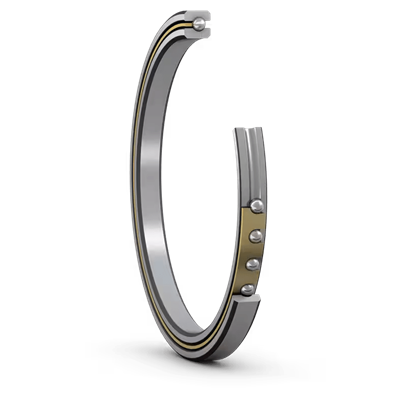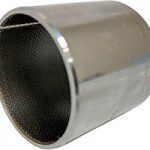
In the world of robotics, where space is limited and performance is a key qualification, miniature bearings play a critical role. They enable precise motion, reduce friction, and contribute to the overall compactness and agility of robotic systems. At CCTY, we specialize in developing miniature bearings engineered for high-performance robotic applications—whether you’re building surgical robots, collaborative arms, or humanoid robots.
Why Miniature Bearings Matter in Robotics
As robots become smaller, faster, and more integrated into everyday life, their internal components must follow suit. Bearings are found in robotic joints and actuators. In miniature form, these components deliver several key advantages:
- Precision: Essential for repeatable motion and accurate positioning.
- Reduced Weight and Size: Smaller, lighter components unlock design possibilities and enable engineers to meet performance and space constraints more effectively.
- Efficient Operation: Low-friction designs extend bearing life and help reduce power consumption.
- Low Maintenance: High durability and long cycle life reduce the frequency of servicing.
- Custom Fit: Tailored dimensions make better use of tight housing geometries.
From dexterous hands in humanoids to compact actuators in surgical arms, miniature bearings must be robust yet compact in size.
What Makes CCTY’s Miniature Bearings Different?
CCTY has long been a trusted bearing manufacturer for OEMs in automotive, industrial, and off-highway sectors. This experience directs how we approach the challenges of robotics.
Our miniature bearings for robotics are:
1. Customizable for Unique Designs
We collaborate directly with engineering teams to design application-specific bearings. Whether you need extra flange, thinner sections or non-standard bore diameters, we create what your project requires. At CCTY, our main objective is to help roboticists utilize a bearing that fits the application rather than limit the application to fit the bearing.
2. Manufactured to Tight Tolerances
Our precision manufacturing processes ensure tight radial runout, low radial internal clearance, low friction torque and high positional accuracy, which are essential for stability and assembly in high-speed or repeatable tasks—key for robots that depend on precise motion.
3. Engineered with the Right Materials
We offer a variety of material and coating options for corrosion resistance of different environmental conditions, ultra-smooth rotation and high durability.
4. Optimized for Longevity
Miniature bearings are often used in high-duty-cycle environments. Our onsite heat treatments and maintenance-free designs increase service life—helping robots stay online longer.
Common Applications for CCTY Miniature Bearings
With robotics growing in both complexity and accessibility, miniature bearings need to offer performance without compromise—especially when engineers are looking to maximize load capacity within limited housing.
| Bearing Type | Size | Application |
| Crossed Roller Bearing | Bore Size ≥ 10mm | Rotary Actuators Output |
| Flexible Ball Bearing | Bore Size ≥ 20mm | Rotary Actuators Input |
| Bushings | Bore Size ≥ 2.5mm | Humanoid Robotic Hands, Rotary Actuators, Linear Actuators & Linkages |
| Spherical Plain Bearings, Rod Ends and Linkages | Bore Size ≥ 3mm | Linear Actuators, Rod Ends |
| Four Point Contact Ball Bearing | Bore Size ≥ 20mm | Linear Actuators |
| Angular Contact Ball Bearing | Bore Size ≥ 20mm | Linear Actuators |
Sizing Miniature Bearings for Robotics: A Quick Guide
Choosing the right bearing involves more than just matching inner and outer diameters. Here are the key factors to consider:
1. Load Type: Will your bearing face radial, axial, or combined loads? For example:
- Radial Load Only: A standard deep groove ball bearing may suffice.
- Combined Radial, Axial and Moment Loads: Consider crossed roller bearings for stability.
2. Speed Requirements: Higher speeds require better cage designs and low-friction materials.
3. Housing Space: Miniature bearings come in many variations—thin section, flanged, open, sealed, and more—to optimize every millimeter of your housing design.
4. Environmental Conditions: Will the robot be working in a cold room, surgical center or harsh environment? Does the bearing require corrosion resistance materials to operate in humid environments? CCTY engineers will guide the best material and sealing options.
Why Engineers Choose CCTY
CCTY isn’t just a bearing supplier, we’re a motion control partner. We work directly with OEMs from design to prototype to full production, offering:
- Rapid prototyping
- Application-specific engineering
- Global supply capabilities
- Dedicated account and technical support
Our miniature bearings for robotics reflect a blend of precision engineering, robust design, and real-world testing. Whether you’re working on a next-gen humanoid robot or a compact inspection drone, you’ll find a reliable partner in CCTY.
Ready to Talk Miniature Bearings for Robotics?
Miniature doesn’t mean underperforming. The performance of your robotic system depends on the quality of every component, especially the bearings that keep it in motion.
Talk to one of our engineers today to explore how CCTY’s miniature bearings can enhance your next project. We’re here to support your innovation with custom solutions, deep technical knowledge, and a relentless commitment to quality.
Contact Us or view our bearing capabilities to get started.


